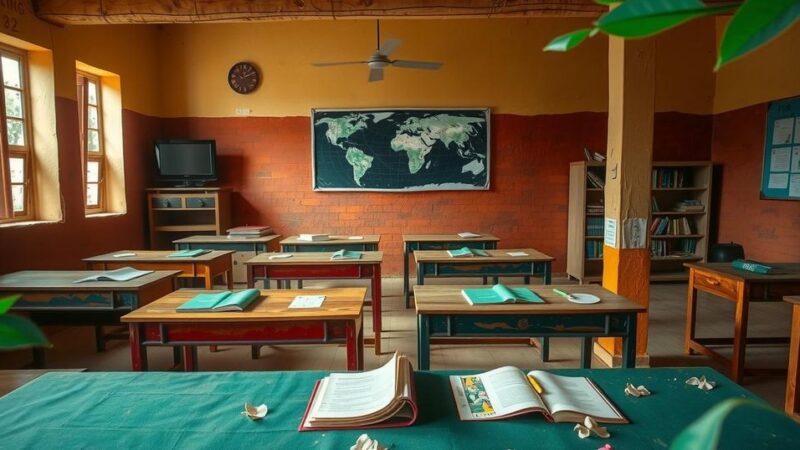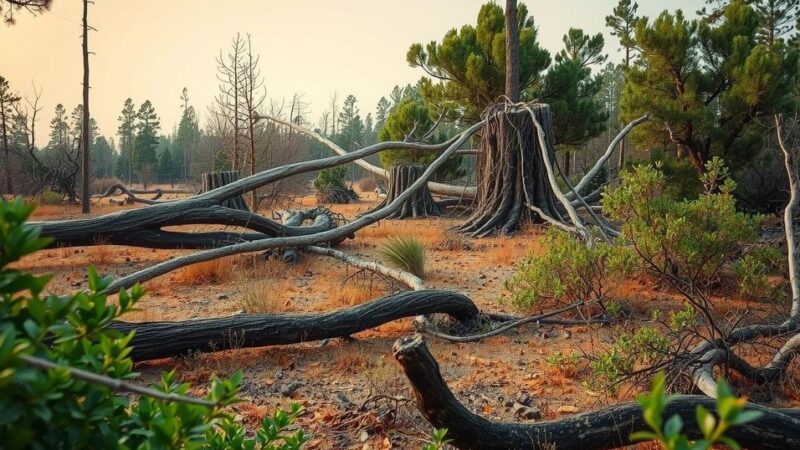A study in Neuquén, Argentina, evaluates the effectiveness of assisted natural regeneration (ANR) at former oil drilling sites. Researchers found lower plant density and diversity in restored areas compared to undisturbed deserts, yet noted the presence of about 40% of expected species. Insights emphasize the importance of soil microbiomes and potential adjustments to restoration techniques to improve ecological recovery.
In Argentina’s Neuquén province, local regulations mandate oil companies to create furrows at decommissioned drilling sites to encourage plant growth, a method known as assisted natural regeneration (ANR). Despite the requirement since 1999, this technique’s effectiveness had not been evaluated until a recent study compared 16 ANR sites to undisturbed desert areas. Results indicated that while plant density, diversity, and coverage were significantly lower in restored sites, the presence of approximately 40% of the species typically found in undisturbed areas was a positive finding.
The challenging environment of the Monte Desert, characterized by temperature extremes, scarce rainfall, and nutrient-poor soil, complicates plant survival. Oil drilling and fracking have exacerbated this issue, leaving numerous sites devoid of vegetation. Research conducted by the National University of Comahue in 2024 highlighted the limitations of current ANR practices and suggested a need for more rigorous investigation into the soil microbiome, which is crucial for supporting plant communities in arid conditions.
Florencia del Mar González, the lead investigator, shared surprising observations from fieldwork, noting unexpected plant responses at former drilling sites. Initial satellite imaging suggested minimal recovery, yet field investigations revealed some regrowth. These findings prompted inquiries into the effectiveness of the employed ANR techniques, which involve relatively low-cost practices aimed at enhancing natural growth conditions.
In total, 15 species were identified at the restored sites, a fraction of the 38 species noted in ecological reference sites. Among these, certain species traditionally seen in stable ecosystems, such as Larrea divaricata, displayed resilience. However, the overall plant coverage remained considerably lower in degraded sites, emphasizing the need for improved restoration strategies. Acknowledgment of the underground biome’s role, particularly regarding nutrient availability, is vital for future restoration efforts in drylands.
Expert James Aronson emphasized the necessity of understanding soil conditions for successful dryland restoration, noting that visible plant recovery may take years compared to subterranean changes. Research initiatives currently explore soil microbiota composition and the introduction of nurse plants, which could facilitate plant colonization and accelerate ecosystem recovery. Mel González and her team advocate for deeper furrows at ANR sites, proposing that this adjustment could enhance water retention and mitigate heat.
The implications of this research extend beyond Argentina’s deserts, addressing broader environmental challenges related to human activities, including road construction and land degradation. The insights drawn from this study inform methodologies for recovering damaged ecosystems worldwide, highlighting the importance of adaptive recovery strategies in the face of climate change and biodiversity loss.
In summary, the recent study conducted in Neuquén province reveals critical insights into the effectiveness of assisted natural regeneration (ANR) techniques employed at former oil drilling sites in Argentina’s Monte Desert. While the presence of some species indicates a degree of success, the overall lower plant density and diversity suggest significant room for improvement. Future research focusing on soil microbiomes and the introduction of supportive plant species is imperative for enhancing restoration efforts in arid ecosystems.
Original Source: news.mongabay.com






